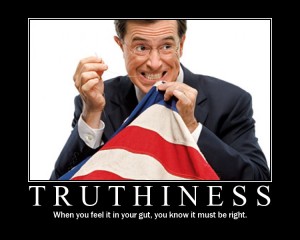There are, I’m guessing, about a million brand building models.
Give or take.
Let’s call it 1,000, 003. (Or 1,000, 004. Someone in Cambodia just reinvented brand building.)
There are the big brand boys, with their big brand toys, their “human truths” and their “proven methods”. FutureBrand. Interbrand. Landor. Coley Porter Bell.
Every advertising agency, design shop and marketing specialist has their own brand methodology. In Australia, that would range from monoliths like DDB to BBDO to stone throwers like me. Every single one of them “highly effective” and “based on human truths and market insights”.
Every single one of these processes offers a unique way of looking at your brand and drills down into what matters to your market.
It’s a process.
It’s proven.
“It works.”
Here’s the thing.
It probably will work.
Your short term metrics will trend upwards. Your ROI, if your product is any good to begin with, should just about pay for the process of getting a new brand to market.
Getting a new product to market is a different matter.
Getting new packaging to market is… well… as a genie I once knew said, “I’d rather build a superhighway to Tasmania using nothing but dog-hair and spit.”
It can be very rewarding.
But you do feel, halfway through the journey, like the dog has run away and your mouth has gone strangely dry.
Sorry. Distracted by a dog story.
If you’re working on a rebrand, a new look should work.
The science, as King Julian would tell us, is solid.
The “human truth” many rebranding projects are based on is the human desire for something new.
This innate need is hardwired into our brains. Somewhere in the temporal lobe, in the realm of the Princess of the Limbic System, the Amygdala.
The Amygdala governs fear and memory.
Back when we were a sub-species of mammal, our ability to spot new-ness was a defence mechanism. We’d see something new. And we’d hide. New meant danger. Like tigers. And mammoth. And door to door sales people.
We humans love familiarity. Familiarity is safe. Familiarity is comfortable. It may breed contempt, but no-one ever got eaten alive by contempt. Fortunately, for us as a species, we also have a healthy amount of curiosity. One of the rewards of curiosity is dopamine. (I’ll let you join the dots.)
Curiosity means some of us get to learn life lessons from those brave souls we see getting crushed beneath the feet of an enraged mammoth..
We are drawn to new things.
And comforted by familiarity.
So, a familiar product presented in a new way works for us.
This, and the Power of Recency, is why advertising works.
Sorry. Distracted by science.
My point is not that you don’t need big brand thinking from big brand thinkers.
They understand the secret power of a brand.
They understand, by ensuring you look and sound relevant, and you have the framework for a consistent approach to the market, you won’t need to re-invent your particular wheel for about 7 to 10 years.
The only trouble is; brands are built by people. And people, as it turns out, can be only too human.
Brand promises are delivered by people.
Reputations are created by people.
Every brand in the world is held to ransom by the behaviours of the people delivering the product, managing the systems, overseeing the processes, mining the data, fronting the customer, or wiping up the vomit in aisle 4.
People who either like what they’re doing.
Or who are just doing it for the money.
Or the prestige.
Or whatever personal demon pulls their little red wagon.
People who may want to buy into something nobler than a pay cheque and a uniform.
But whose behaviours are guidelined by WHS and HR.
(Together, like tequila and worms, a heady combination of fear and science.)
Which leads me to wondering.
While HR and WHS don’t seem to understand the finer points of brand building. And watching some in HR engage with branding is like watching marmosets trying to drive a Lamborgini. In a world where human contact is, increasingly, the great differentiator for brands, why are marketing people still playing with old models?
It makes us look like golliwog collectors at a Star Wars Convention.


Leave A Comment